Preserving Culture and Coastlines: LSU Alumna Applies Cutting-Edge Techniques on Mounds, Louisiana Delta
February 05, 2025
As a student, Liz Chamberlain often walked past the LSU Campus Mounds, briefly soaking in their charm and mystery before rushing off to class.
“They were beautiful, but also sort of in the background of my college experience,” she said.
In November, she returned to campus as Liz Chamberlain, Ph.D., part of a research team studying the mounds and utilizing Chamberlain’s expertise in a scientific method that dates ancient materials like geological sediment by measuring when sand grains were last exposed to sunlight.
This is the first time the technique — optically stimulated luminescence, or OSL — has been employed on the LSU Campus mounds. Chamberlain hopes she and her fellow researchers can shed light on some of the mounds’ mysteries, primarily their age.
“I feel like it's a very important story for LSU, for Louisiana, and for understanding the cultural heritage of the campus and of this landscape,” she said, adding that her expertise in OSL is “a nice way that I can contribute."
Chamberlain, an assistant professor at Wageningen University in The Netherlands, made the long trip back to Louisiana to conduct the work. It’s a trip she’s made several times since earning her master's in geology from the Geology and Geophysics department in 2012.
On past trips, her focus has been Louisiana’s disappearing coastline, another important issue she learned about during her time in the state. She’s also using OSL to help understand and ultimately help mitigate the problem.
“Through my time in Louisiana, I got to see this change in the landscape and the coast and see how important the environmental processes are to the way that we live here,” she said.
The Campus Mounds
The Campus Mounds researchers hope to determine when construction on the mounds likely began by OSL dating a sample of sediment taken from the original land surface, below the mounds, to pinpoint the moment in time when it was first elevated by ancient people.
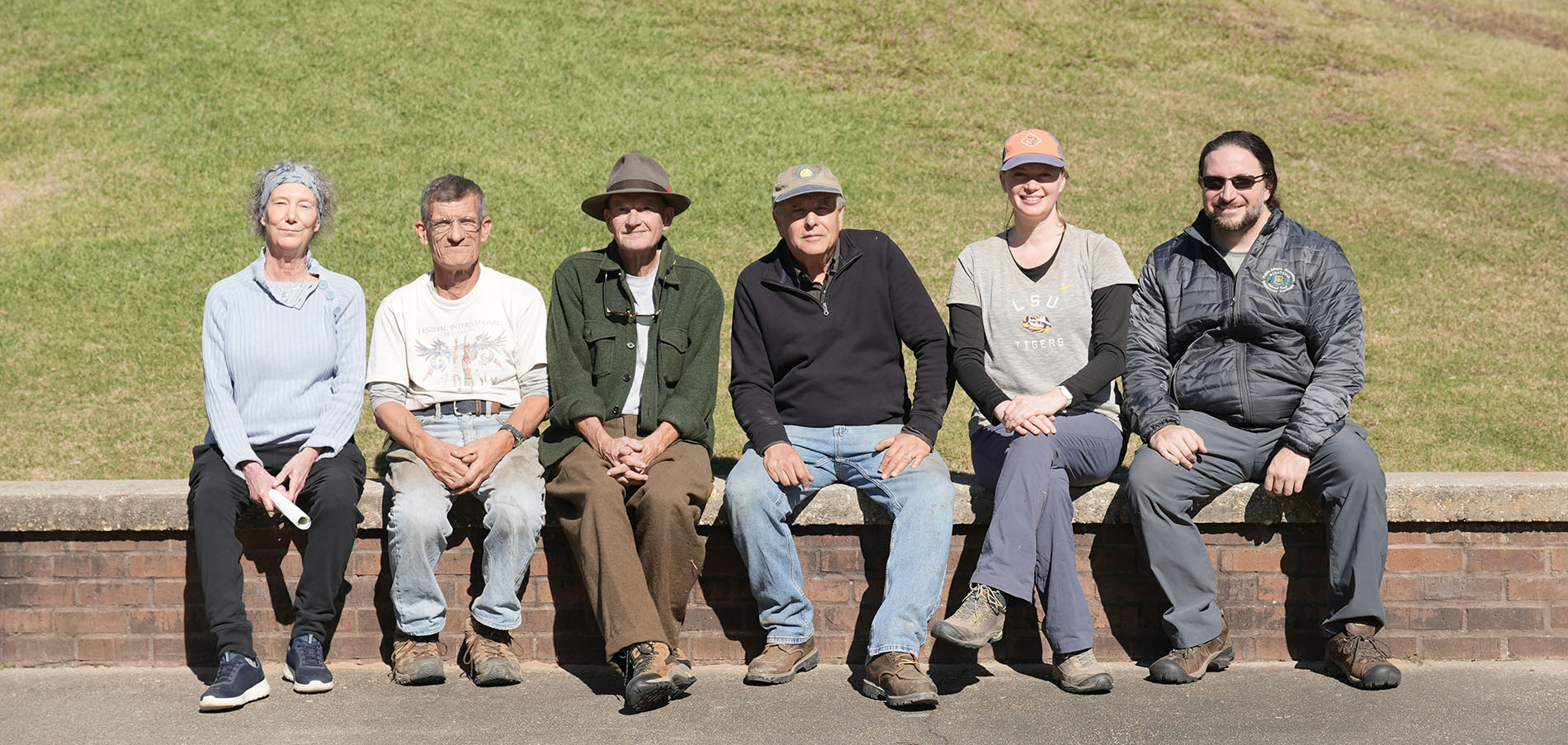
Participants in a study of the LSU Campus Mounds included, from left, Rebecca Saunders, WG Haag Professor of Archaeology in the Geography & Anthropology Department. LSU; Chip McGimsey, state archaeologist, Louisiana Division of Archaeology; Tad Britt, chief archeology, National Park Service's National Center for Preservation Technology and Training; Rolfe Mandel, professor, Department of Anthropology at the University of Kansas; Liz Chamberlain, assistant professor, Soil Geography and Landscape group & Netherlands Centre for Luminescence dating of Wageningen University; Matthew Helmer, Kisatchie National Forest heritage manager and LSU affiliate professor in the Geography & Anthropology Department. Also taking part was LSU doctoral student Reilly Corkran.
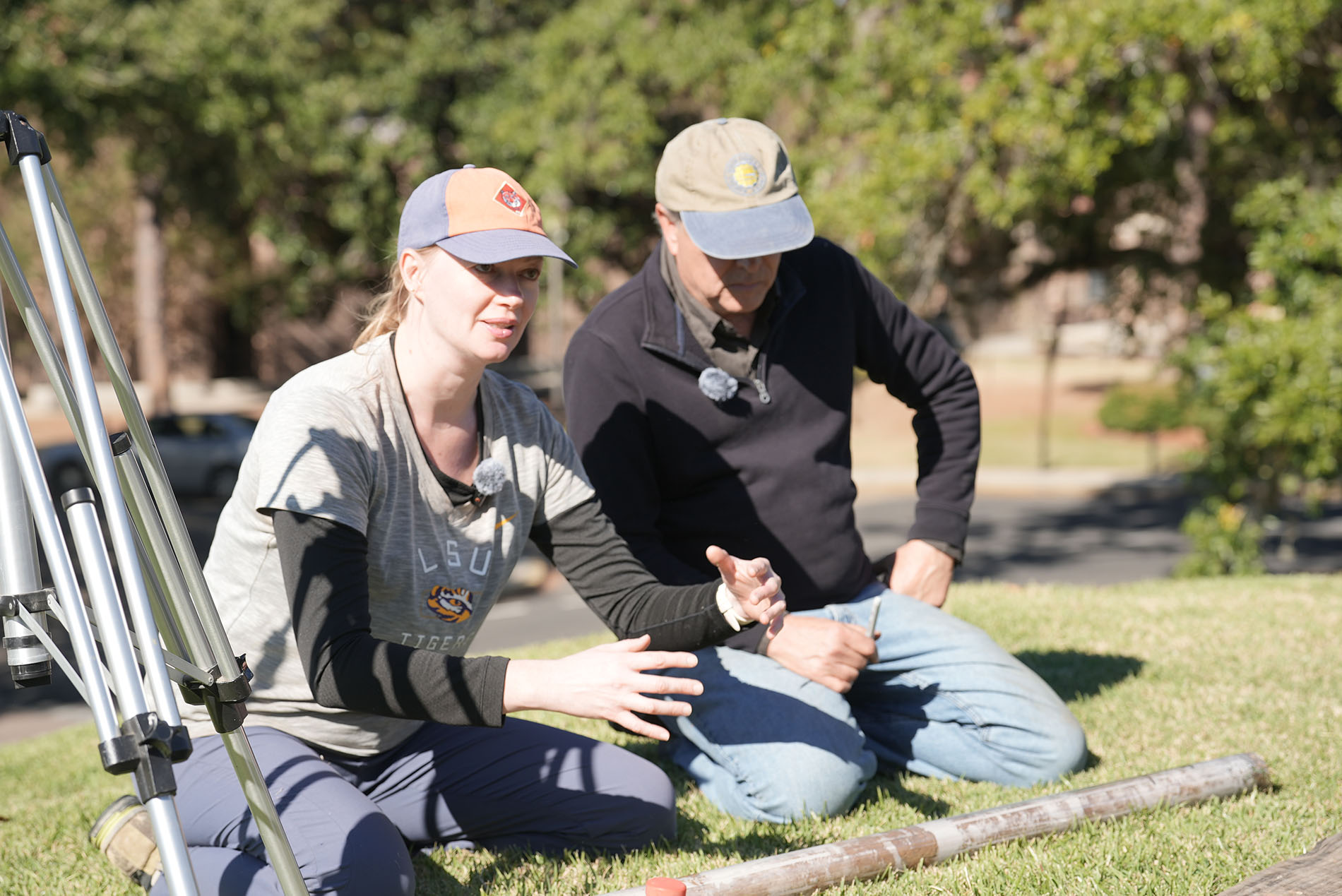
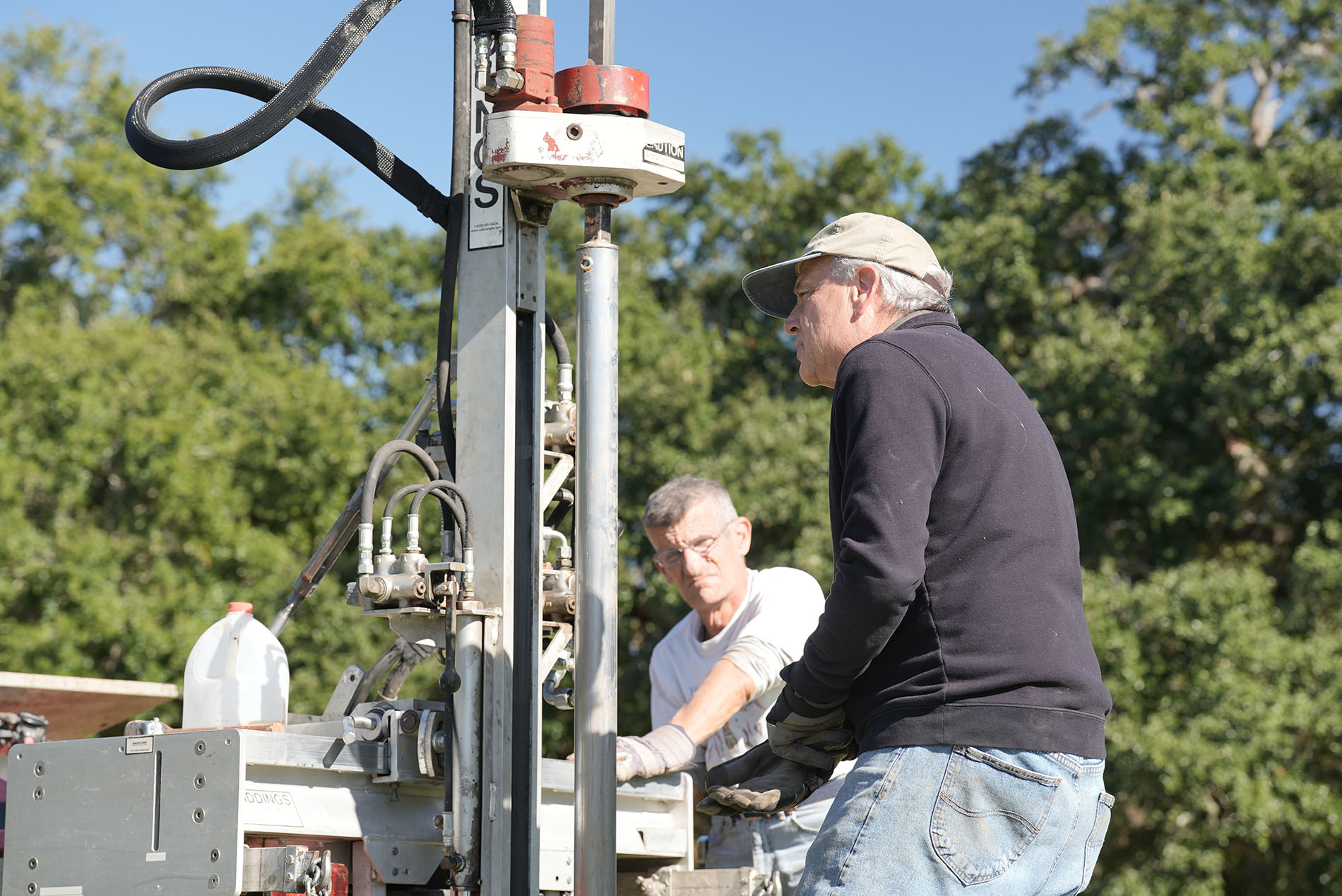
Chamberlain said that while radiocarbon dating has been conducted on the mounds in the past, a new approach using OSL can make determinations that radiocarbon may miss.
“You can imagine, in a mound-building process, we have this natural land surface, and people are moving around on it, and they start to pile up the sediment that constructs the mounds,” she said. “And within that sediment, there might be organics, like plant material, that can be used for radiocarbon dating.
“Those organics can be very old because they can come not from the mound building process itself and from that cultural activity, but instead from the old landscape that was mined for the sediment to build the mound.
“And so, with optically stimulated luminescence, because it directly measures sand grains and their sunlight exposure, we can date cultural activity.”
Samples collected in November will be analyzed at the Netherlands Centre for Luminescence dating, where Chamberlain is a researcher, with results expected around late 2025.
In addition to Chamberlain, partners in this effort represent LSU’s Geography & Anthropology Department , the Louisiana Division of Archaeology, the National Park Service's National Center for Preservation Technology and Training, and the University of Kansas’ Department of Anthropology.
Also integral to the project, according to team member Tad Britt of the National Park Service, is the Chitimacha Tribe of Louisiana. The tribe’s involvement is essential to the LSU Campus Mounds within broader North American archaeological studies, Britt says, and should illuminate the dynamic interactions between the Chitimacha Tribe and their environment.
The tribe's participation allows for the development of a comprehensive narrative tracing the region’s history from the past to present day and can significantly contribute to a better understanding of Native American culture in Louisiana, Earth science, and world history.
The Louisiana Coast
Chamberlain said a Delta Geology course at LSU, taught by professor Sam Bentley, the Billy and Ann Harrison Chair in Sedimentary Geology, helped her understand that the way South Louisiana formed over thousands of years manifests in the coastal issues seen today.
“For me, that course was where it all clicked,” she said, leading her to participate in a series of projects to help save Louisiana’s coastline.
In recent years, Chamberlain has worked with a team from LSU on a RESTORE Act Center of Excellence for Louisiana (LA-COE) project. The project focuses on the Mid-Barataria Sediment Diversion — a major initiative to divert sediment and water into Barataria Bay to rebuild land.
The team’s role was to examine the sediment layers beneath the bay — looking at how old the ground is where the diversion will happen. By doing this, they hope to understand how much the land there has sunk in the past, predict how much it might sink in the future, and consider how engineering practices might maintain it.
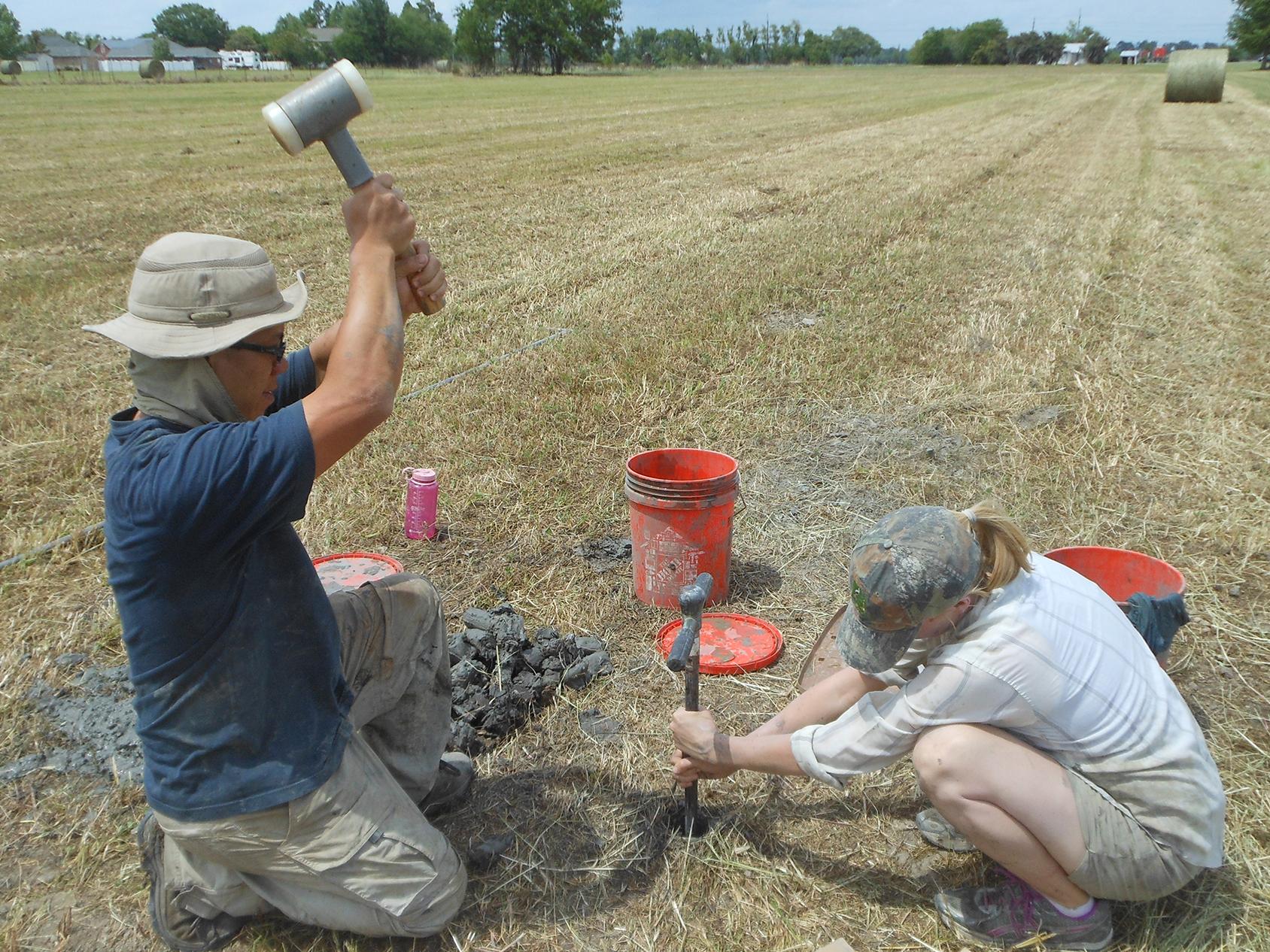
Liz Chamberlain and a colleague collect a sample for OSL dating along Bayou Lafourche, an abandoned course of the Mississippi River in South Louisiana. (Image by Anjali Fernandez)
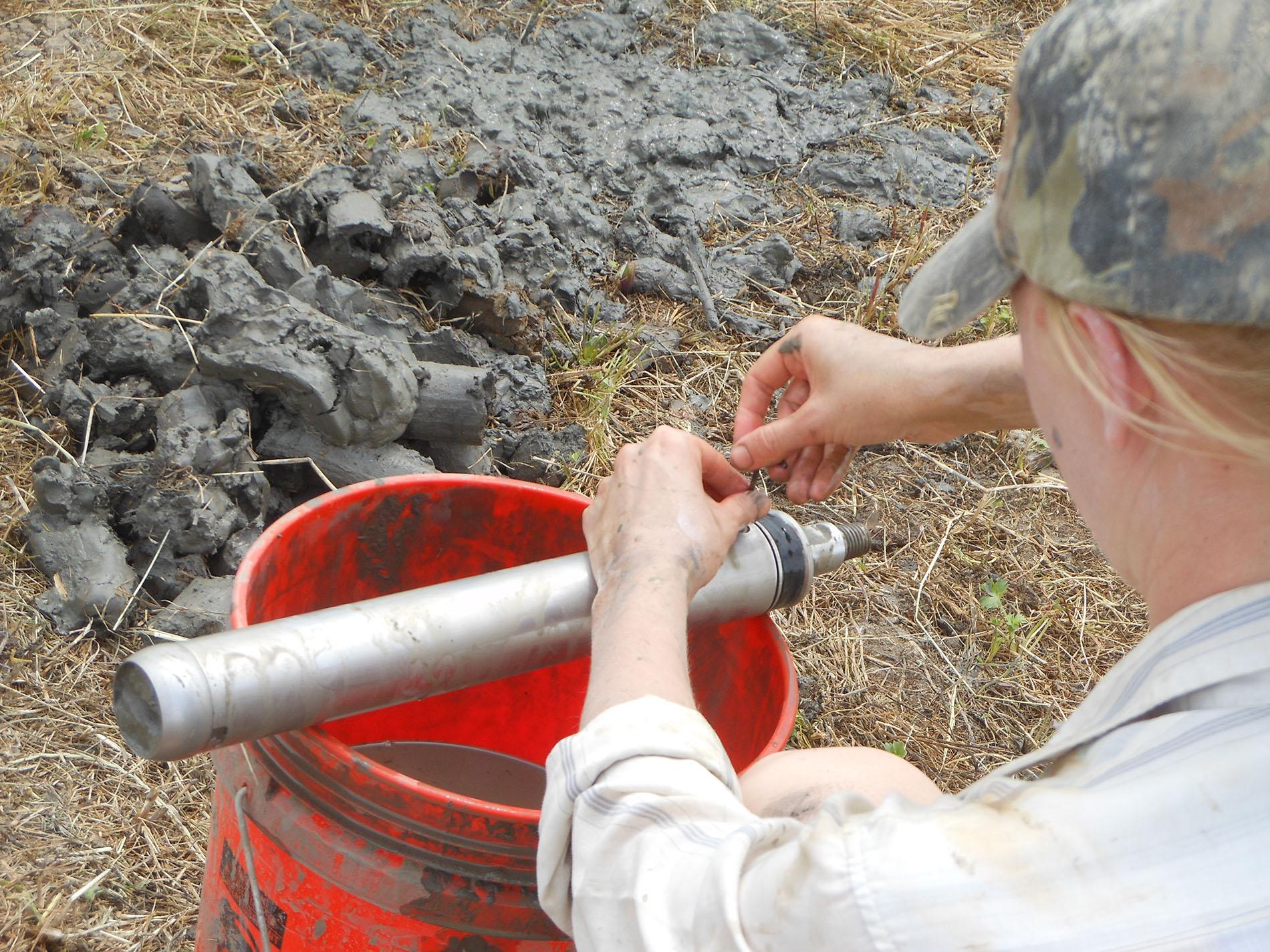
Liz Chamberlain extracts a sample of buried Louisiana sand from a light-proof sampling device for OSL dating. (Image by Anjali Fernandez)
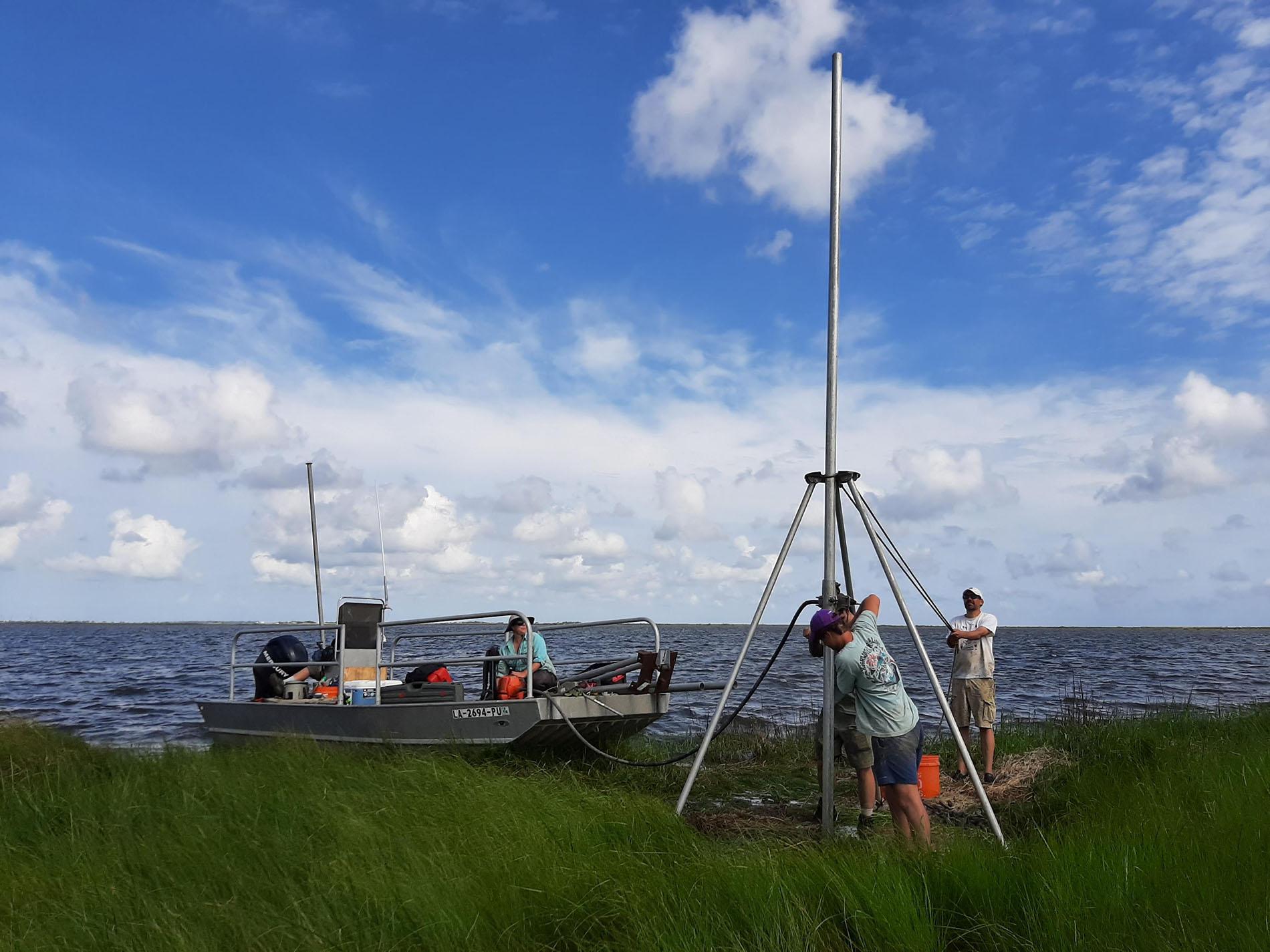
The RESTORE LA-COE research team extracts a sediment core from a wetland in Barataria Bay to study subsidence and carbon sequestration. (Image by Liz Chamberlain)
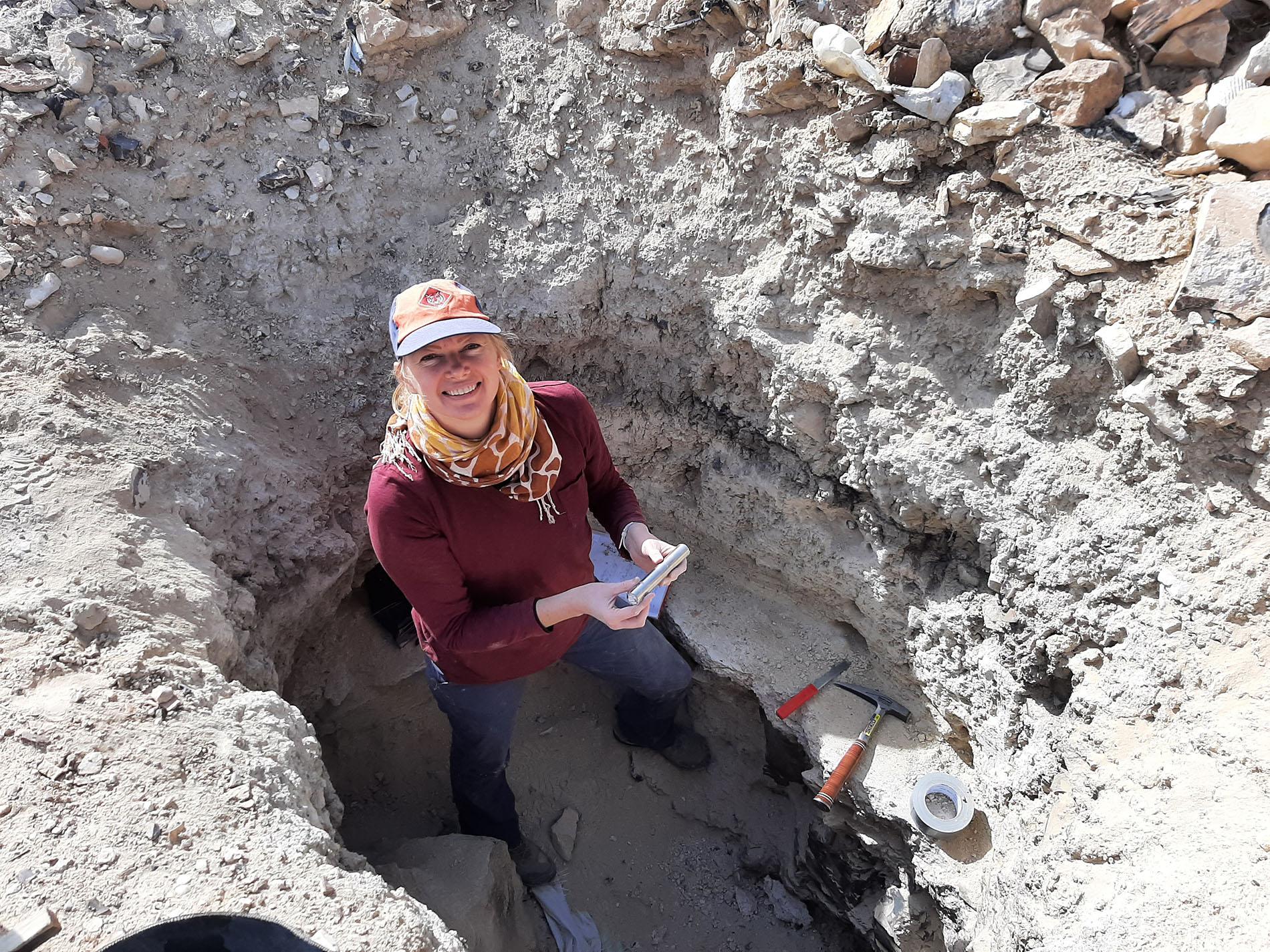
Liz Chamberlain collects a sample of archaeological sediments from an ancient water reservoir near Ma’an, Jordan, for OSL dating. (Image by Sufjan Al Karaimeh)

Liz Chamberlain collects a sample of mud from the abandoned Ganges River channel of Bangladesh for OSL dating. (Image by Mahfuzur Rahman)
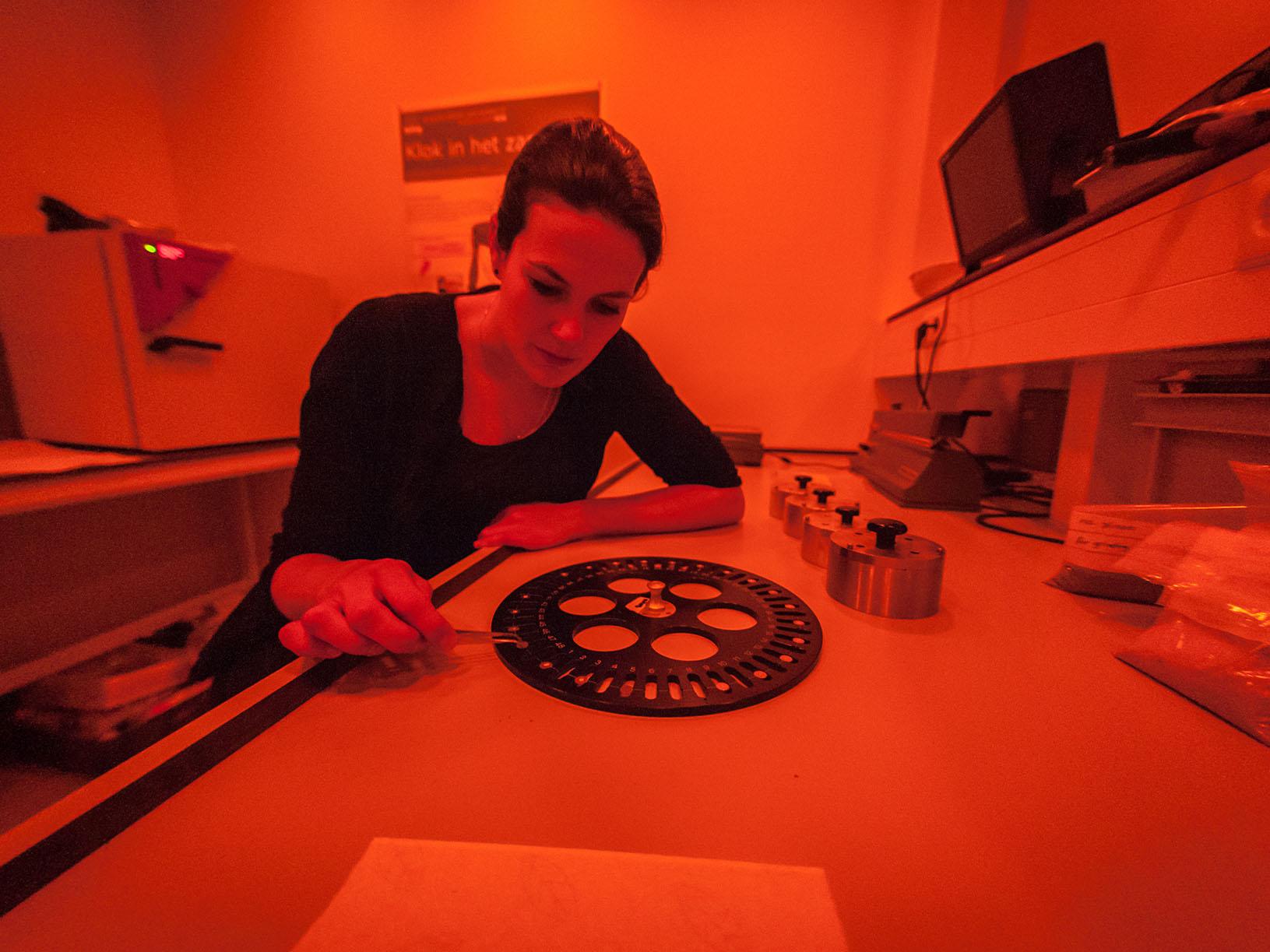
Laboratory technician Erna van den Hengel-Voskuilen prepares a sample for OSL dating at the Netherlands Centre for Luminescence dating, Wageningen University. (Image by Guy Ackermans)
“In these coastal areas, it's really important to have land and wetlands — marshes — because this is what protects the more inland areas like New Orleans from storm surges,” she said. The project also investigates the role of deltas in the global carbon cycle, a topic Chamberlain will explore further in the international Leaky Deltas workshop she is co-organizing on LSU’s campus this March.
Prior to that, Chamberlain said, a study in Lafourche and Terrebonne parish coastal areas used OSL dating to help determine how quickly the shoreline was built over time. Researchers were able to reconstruct how Bayou Lafourche — back when it was a major river channel — helped create land in the Mississippi Delta.
“We found that Bayou Lafourche and the other channels connected to it built land at rates of six square kilometers per year, which is really great if you think about that in the context of offsetting land loss and what we're seeing today in the Delta,” she said.
Unfortunately, there’s a downside. Over the past century, land has been disappearing much faster than the rate at which it was built over recent millennia.
“So, it was kind of a sad story about land loss in that regard, but still showing land building processes are very possible here.”
‘I Just Really Loved Louisiana’
Though she’s from Wisconsin, Chamberlain lived much of her adult life in Louisiana, during and after her time at LSU. Her recent return to campus was a treat, she said.
“It's really nice to be back in Louisiana. I always love it when I get to come back here,” she said. “To me, it feels like home and just nice to walk around LSU's campus, to see my colleagues, drop in and visit professors that I learned from.”
She said her fondness for Louisiana can be traced to a childhood family vacation.
“We went to Grand Isle, and I just really loved Louisiana,” she said. “I loved the culture, the warmth, the environment, everything. And coincidentally, LSU football was very strong when I was in high school, and so there was a lot of good advertising in that regard that kept it on my radar.”
She enrolled at LSU in 2002 and started on a pre-veterinarian track before learning she didn’t like working with animals. Next came a shift to the arts, which she enjoyed. But when it came to choosing a career path, geoscience won out.
At LSU, she observed that Louisiana residents are acutely connected to their environment and aware of coastal issues.
“For me, it's a great place to work where the science that we do, in my case as an academic, connects to immediate issues that are important to people.”
Next Steps
Let LSU put you on a path to success! With 330+ undergraduate programs, 70 master's programs, and over 50 doctoral programs, we have a degree for you.


